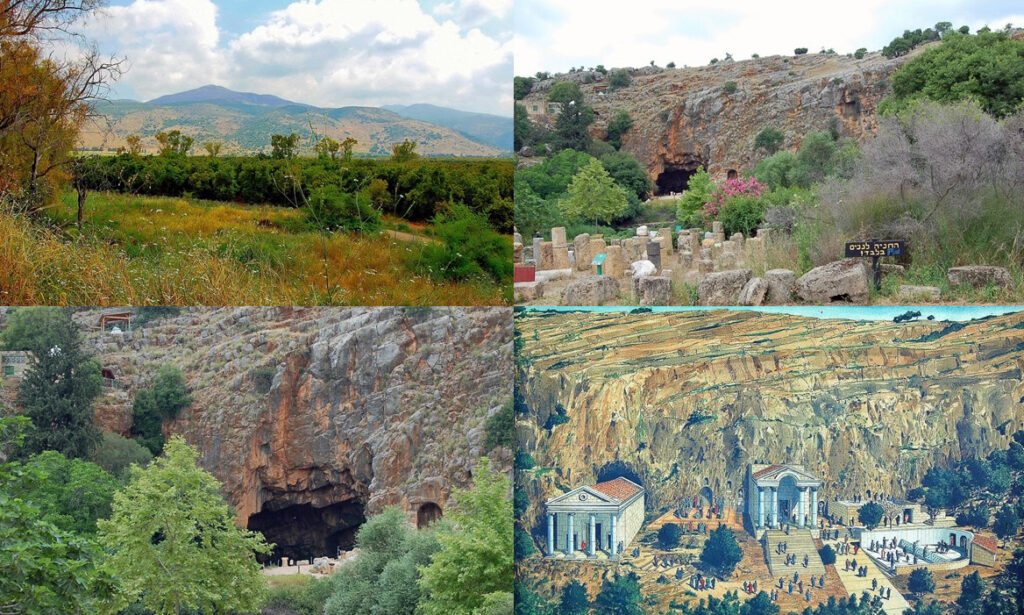Today, in our trip through Israel and the Palestinian Territories, we visit Banias, previously known as Caesarea Philippi, the site of one of Jesus’ best-known claims.
Banias lies at the base of Mount Hermon in the far northeastern corner of Israel, three miles east of Tel Dan, which we visited last week. Water from underground springs flows out of a cave opening in a rock wall about 500 feet long and 100 feet high. Ancient people believed that the cave opening led directly to the damp and shadowy home of the dead the Greeks called “Hades.” To appease the potentially angry gods who lived in these nether regions, worshippers made sacrifices before idols residing in niches carved into the rock face near these literal “gates of Hades.” In the third century B.C., the Greeks built a temple in front of the cave to honor Pan, the half-man, half-goat god of fright from which “Banias” is derived. After the Romans conquered the area in the first century B.C., they gave it to Herod the Great, who built a temple to Augustus Caesar near the Greek temple. Herod’s son Phillip named the area Caesarea Philippi after himself and Caesar. According to the Gospel of Matthew, before heading to Jerusalem for the last time, Jesus led his followers to Caesarea Philippi, about 25 miles north of their base around the Sea of Galilee. While there, Jesus said, as reported in Greek: “And I tell you that you are Peter (Petros) and on this rock (petra) I will build my church, and the gates of Hades will not overcome it.”
The rock cliff at Banias has become a popular destination for people trying to understand what Jesus meant while standing before it with his followers. An artist’s rendering at the site suggests what it looked like at the time.
